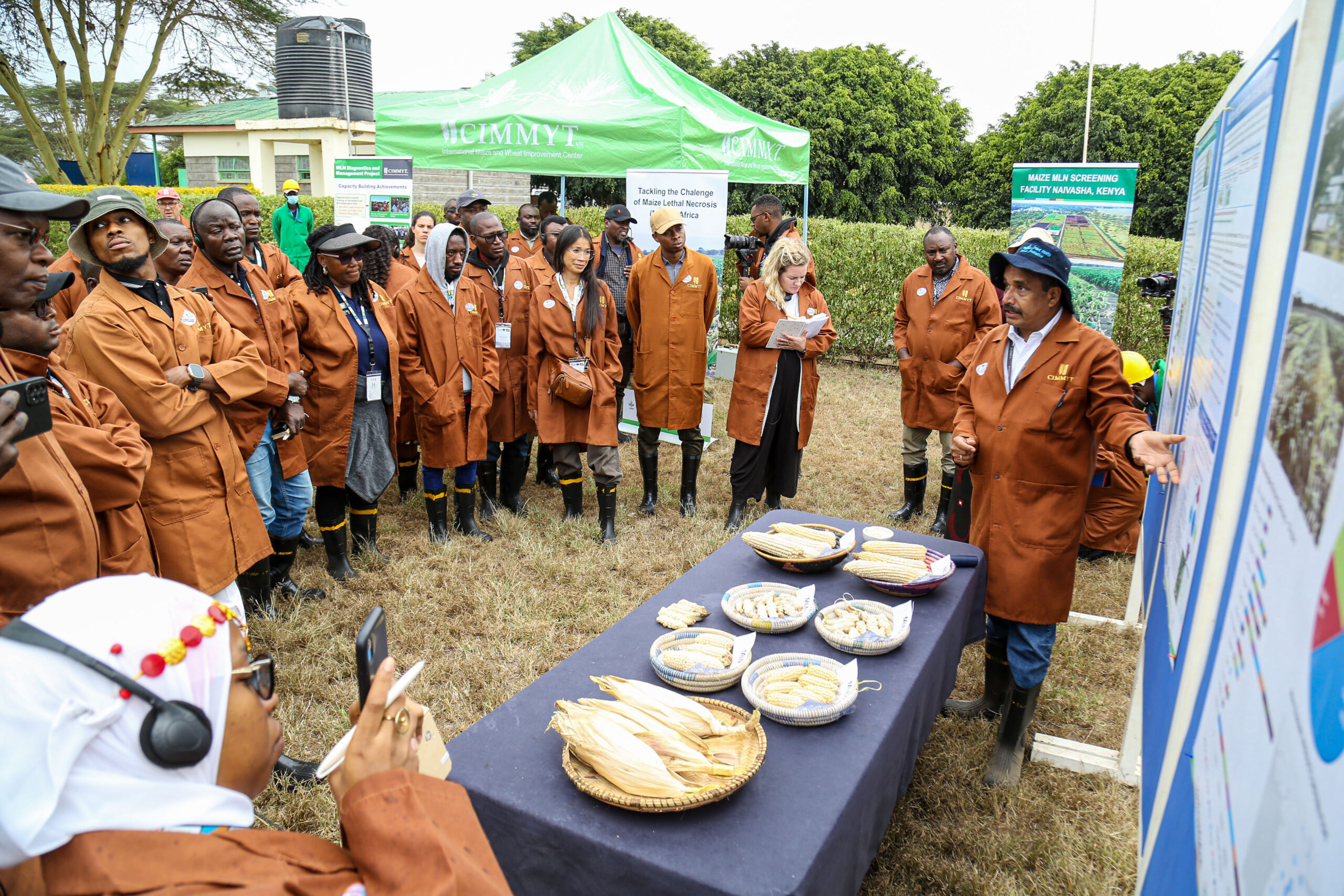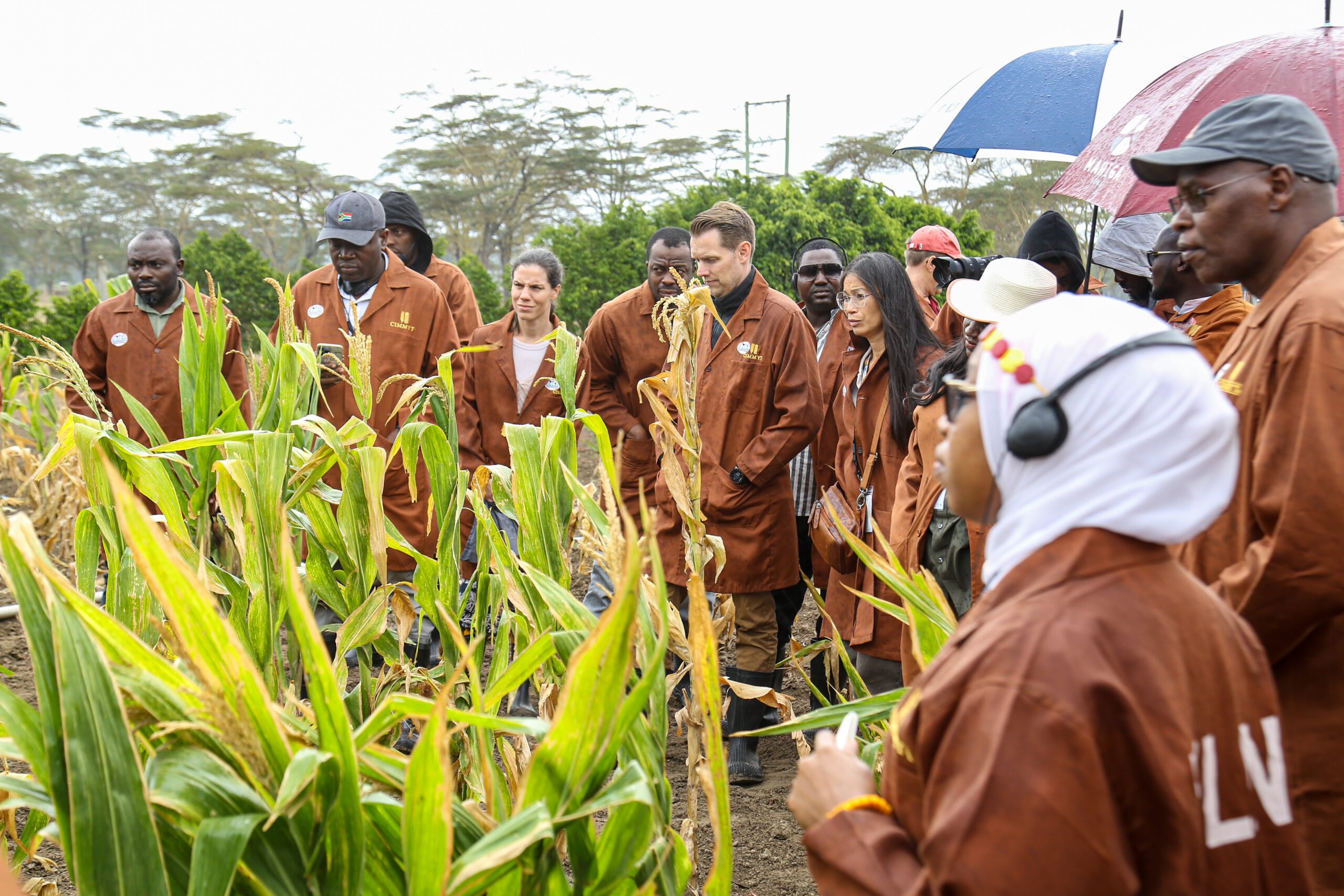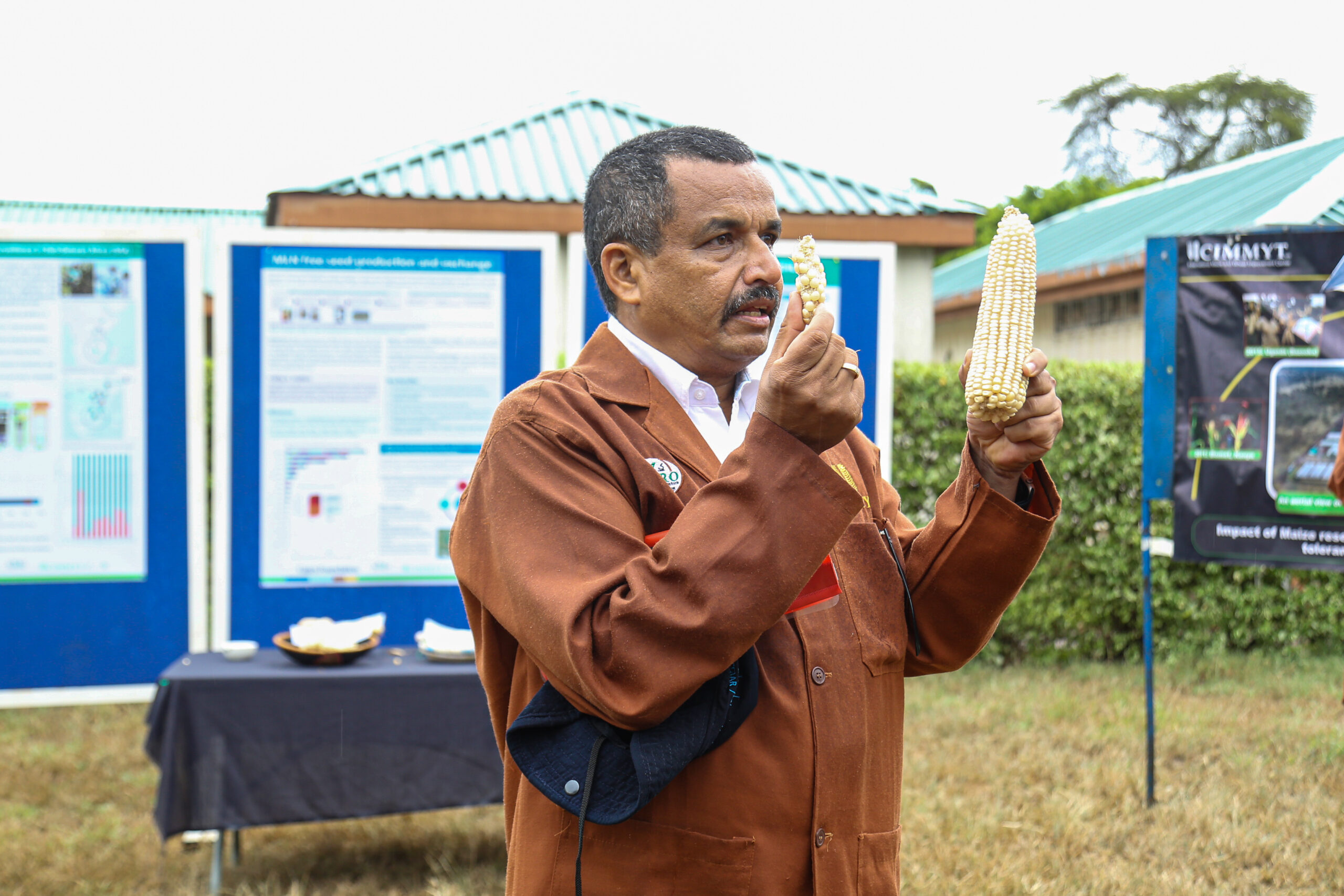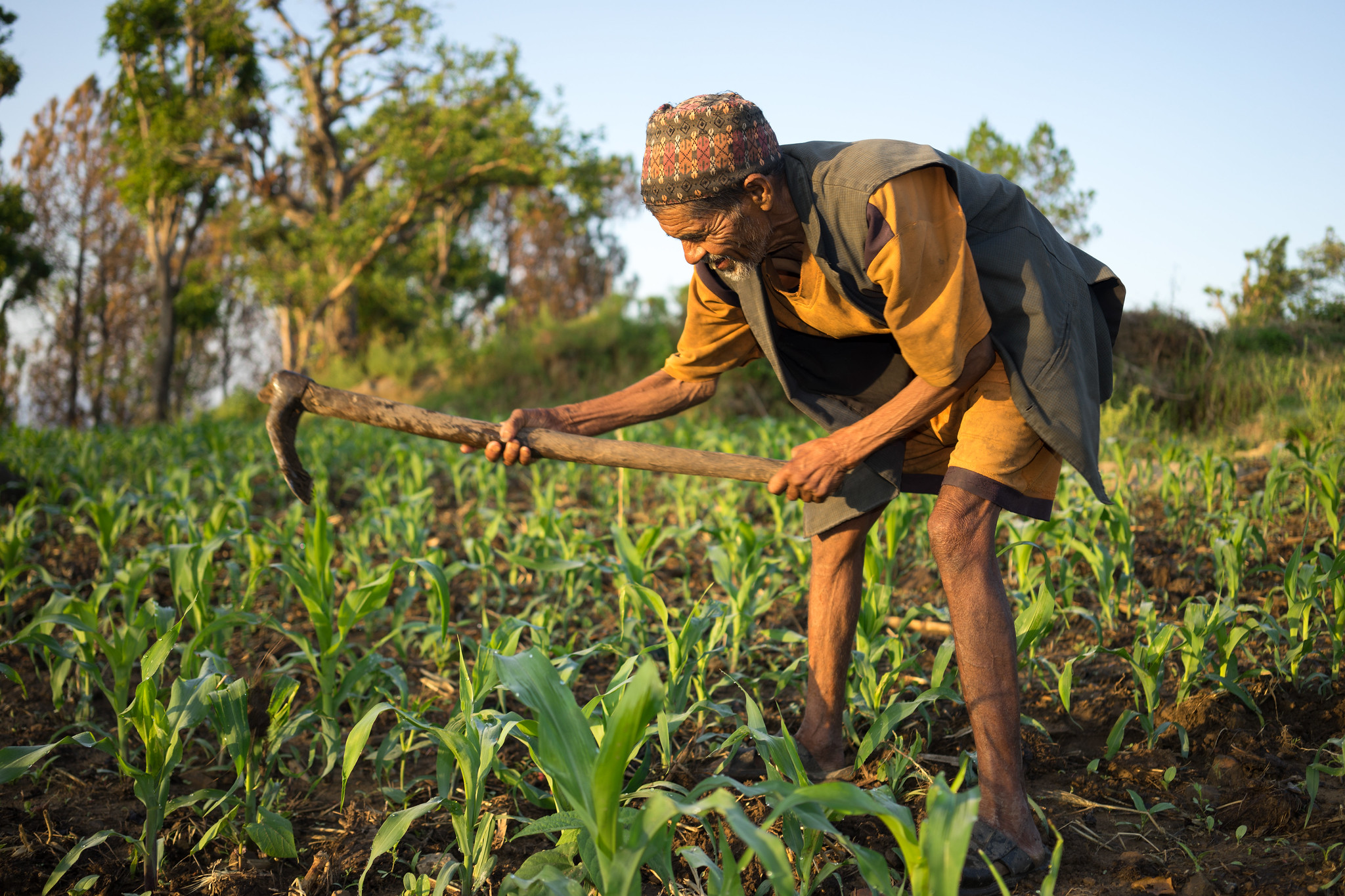
As part of the Agri-Business Facility for Africa (ABF) Maize Workshop held in Nairobi, representatives from across Africa’s maize value chain visited the Maize Lethal Necrosis (MLN) Screening Facility in Naivasha, Kenya on Wednesday 22nd October 2025. The facility is a cornerstone of CIMMYT’s efforts to protect and sustain maize productivity across sub-Saharan Africa.

The visit brought together donor representatives, researchers, and agribusiness leaders from across Africa and Europe, including participants from Senegal, Togo, Uganda, Zambia, Côte d’Ivoire, Kenya, Tanzania, Malawi, Burkina Faso, Cameroon, Burundi, Nigeria, Ghana, and the Democratic Republic of Congo, as well as partners from Germany. It offered them an opportunity to see firsthand how scientific innovation and collaboration are ensuring that maize production and trade remain safe, resilient, and sustainable.
Protecting seed systems from a silent threat

Since its first detection in Eastern Africa over a decade ago, Maize Lethal Necrosis has remained one of the most serious threats to maize production. The disease, caused by a combination of Maize Chlorotic Mottle Virus and Sugarcane Mosaic Virus, can destroy entire fields within weeks if not controlled.
At the Naivasha facility, which is operated jointly by CIMMYT and KALRO ,participants saw how careful screening, diagnosis, and decontamination practices are protecting the region’s maize seed systems. Only MLN-free seed is approved for use and movement, ensuring that farmers and seed companies can continue their work with confidence and safety
Leadership perspectives: Science that safeguards societies
Philipp Feiereisen, Head of Group for the Section Green Transformation in Africa at the Deutsche Gesellschaft für Internationale Zusammenarbeit (GIZ), who joined the visit, reflected on the broader value of the work for farmers and communities across the continent:
“The worst thing that can happen to a farmer is losing an entire harvest. It is not only a personal loss but also a loss for the communities that depend on that food. The work being done here is extremely relevant because it helps prevent such risks, not only for farmers but for countries and the continent as a whole. What I find most inspiring is that it is grounded in science and evidence, which makes it truly powerful.”
Linh Feldkoetter, Head of the Agri-Business Facility for Africa, emphasized how the visit brought to life the connection between science, investment, and impact:
“It is encouraging to see what government and partners are doing together, and how the resources invested are being used for real impact,” she said. “Partners are working on solutions that support farmers, strengthen resilience to climate change, and improve water and soil health. The importance of this work for food security cannot be overstated. Even if the results are not immediately visible, the long-term impact is profound.”
Science in action: From detection to clean seed movement
CIMMYT scientists demonstrated the full process that ensures maize seed safety — from diagnosis and field surveillance to decontamination and movement of clean seed across borders.
A major highlight of the visit was the seed treatment process using a ten percent trisodium ortho-phosphate solution. Developed under the CGIAR Plant Health Initiative, this method completely removes the virus that causes MLN. More than one hundred thousand elite maize lines and hybrids have been safely distributed from Kenya to over twenty countries using clean seed production and exchange approach, preventing the spread of disease and ensuring the continuity of breeding and research programs

CIMMYT Plant PathologistSuresh Mahabeleswara explained the significance of this work:
“We are connecting every step, from surveillance to action,” he said. “By treating seed at the source and validating the results through testing, we make sure that farmers and seed producers can operate safely. This system has restored confidence in regional seed exchange and strengthened food security across borders.”
Participants also explored the Maize Clean Seed Production Tracker, a digital platform that brings together data from the field, laboratories, and seed producers to ensure transparent and traceable production of MLN-free seed.
Strengthening partnerships for resilient maize value chains
The Naivasha field visit concluded a week of discussions during the ABF Maize Workshop in Nairobi, where representatives of Matching Grant Fund projects from across Africa met to share experiences and build new partnerships
The visit emphasized the same message: that collaboration, evidence-based science, and practical innovation are key to building resilient maize systems that can withstand pests, diseases, and climate pressures.

A shared mission for food security
For CIMMYT, the MLN Screening Facility in Naivasha is more than a research site. It is a living example of how science, partnership, and commitment can protect food systems and improve lives. It shows that even the most serious agricultural challenges can be overcome when knowledge is shared and action is taken together. As participants left Naivasha, they carried not only lessons from the field but a renewed commitment to continue working together to protect Africa’s maize — one of the continent’s most vital sources of food and income.
 Capacity development
Capacity development 